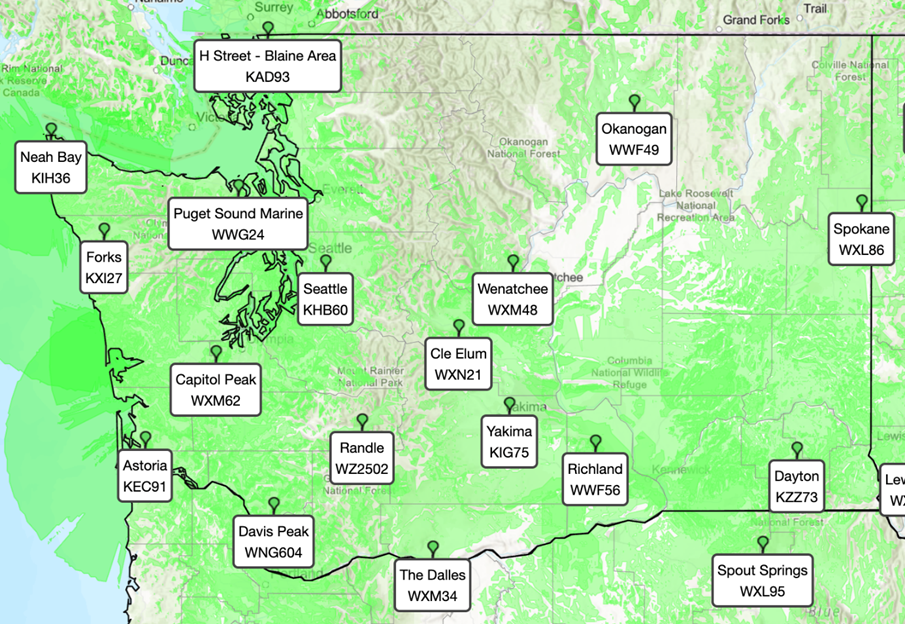Cantwell Reintroduces Bill to Modernize Nation’s Weather Radio
The U.S. experienced 27 weather and climate-related disaster events last year that exceeded $1 billion dollars in damages, resulting in 568 deaths; Bill would expand National Weather Service radio alert coverage to reach 98-99% of the United States
WASHINGTON, D.C. – U.S. Senator Maria Cantwell (D-WA), ranking member of the Senate Committee on Commerce, Science, and Transportation, Sen. Ted Cruz (R-TX) chair of the committee, and Senators Dan Sullivan (R-AK), Brian Schatz (D-HI), Jerry Moran (R–KS), and Gary Peters (D-MI) introduced the National Oceanic and Atmospheric Administration (NOAA) Weather Radio Modernization Act.
The Act will authorize the modernization of the nation’s weather communication and radio service as the country faces increasingly powerful floods, fires, and hurricanes. This legislation is an important next step to Sen. Cantwell’s five-point plan to bolster the United States’ weather readiness, which she outlined in a letter to President Donald Trump earlier this month.
“NOAA Weather Radio is our nation's weather infrastructure that broadcasts 24/7 to keep people informed with immediate, reliable weather information, including timely weather alerts,” said Sen. Cantwell. “This bill helps to upgrade the system with the best technology and communications systems, replacing copper with fiber to reach more people, especially in rural areas. It also directs NIST to develop standards for better warning technology and makes sure NOAA keeps its weather scientist and forecast jobs fully staffed.”
In recent years, Washington state has experienced a costly bomb cyclone, back to back atmospheric rivers, a record-breaking and deadly heat dome, historic flooding that damaged more than 2,000 homes and businesses, along with 1,037 wildfires this year alone that burned more than 40,464 acres across the state and 308,000 acres in 2024.
NOAA’s National Weather Service operates a nationwide network of public radio stations that broadcast weather warnings, forecasts and emergency information 24/7. NOAA Weather Radio includes more than 1,000 transmitters, covering all 50 states, adjacent coastal waters, Puerto Rico, the U.S. Virgin Islands, and the U.S. Pacific Territories. Broadcasts include warnings, watches and forecasts for natural disasters like storms, fire, earthquakes, tsunamis, and even environmental hazards such as chemical or oil spills.
The NOAA Weather Radio Modernization Act would:
- Require upgrades to outdated weather radio technology to provide reliable and continuous weather and emergency alerts. This includes modernizing Weather Radio infrastructure to reduce reliance on copper wire transmissions – which are increasingly unreliable because copper is impacted by extreme temperature changes and severe weather.
- Expand radio coverage to rural areas that do not currently have access to the Weather Radio alert system, increasing coverage to reach 98-99% of the United States population.
- Authorize $25 million per year for 5 years to operate the system and an additional $100 million for modernization and upgrades.
- Direct NIST to develop standards for warning technology and communication in flood prone areas
- Exempt positions across NOAA that are critical for weather forecasting and public safety from hiring freezes.
As states continue to battle severe weather, many communities have faced weather radio outages, including within the last year, when National Weather Service weather radio transmitters in southeast Michigan and South Carolina went down and were unable to send critical weather alerts to residents during storms. Last year, the United States experienced 27 weather and climate-related disaster events that each exceeded $1 billion dollars in damages, resulting in 568 deaths.
There are currently 17 National Weather Radio transmitters in Washington state. Each transmitter location, call sign, and coverage range is displayed below.

Under Sen. Cantwell’s leadership as Chair of the Commerce Committee, a previous version of this legislation passed the Senate in December 2023, but was not enacted into law. Sen. Cantwell is a champion of NOAA and helped secure $3.3 billion in NOAA investments in the Inflation Reduction Act to help communities prepare for and adapt to climate change, boost science needed to understand changing weather and climate patterns, and invest in advanced computer technologies that are critical for extreme weather prediction and emergency response. Her Fire Ready Nation Act, bipartisan legislation to strengthen NOAA’s ability to help forecast, prevent, and fight wildfires, passed the Commerce committee unanimously earlier this year and now heads to the full Senate for consideration. In 2011, she secured Washington state’s first coastal Doppler radar in Grays Harbor County, enabling forecasters to better determine wind speed and rainfall of incoming storms.
###
Next Article Previous Article